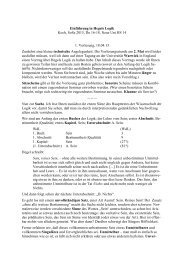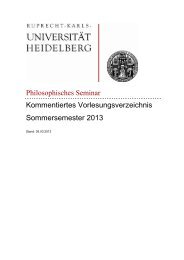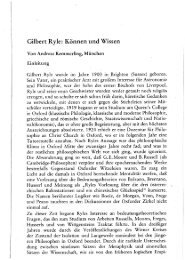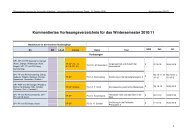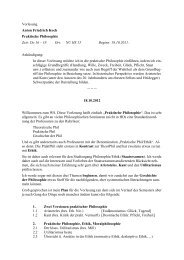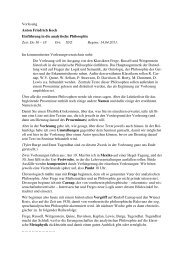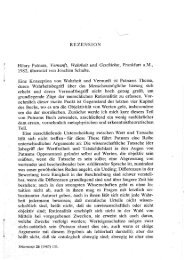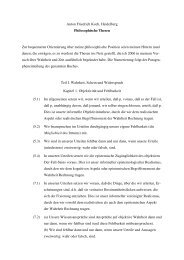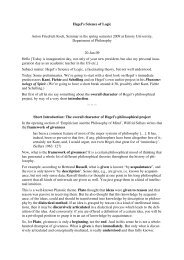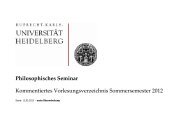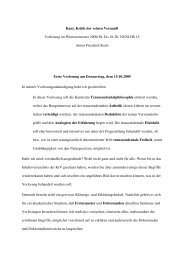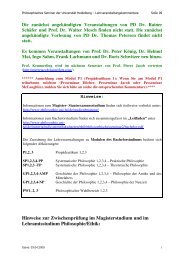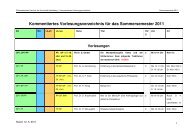KANT'S CRITIQUE OF TELEOLOGY IN BIOLOGICAL EXPLANATION
KANT'S CRITIQUE OF TELEOLOGY IN BIOLOGICAL EXPLANATION
KANT'S CRITIQUE OF TELEOLOGY IN BIOLOGICAL EXPLANATION
Create successful ePaper yourself
Turn your PDF publications into a flip-book with our unique Google optimized e-Paper software.
Mechanism 155<br />
Pure Reason (1781); it occurs occasionally but only in the sense of<br />
"machine" or "system." 24 In the presentation of the antinomy of<br />
freedom, for instance, it is not used at all. The terms "mechanism"<br />
and "causality" are neither equated nor distinguished. Kant introduced<br />
the equation in later writings and used it systematically. In<br />
the new preface to the second edition of the Critique of Pure Reason<br />
(1787) Kant recapitulates the Third Antinomy as an opposition<br />
between freedom and the "mechanism of nature" (Bxxvii-xxx). And<br />
in the Critique of Practical Reason (1788) he almost always says<br />
"mechanism" when he means natural causality. Thus, it could be<br />
objected, if we want to see a development in Kant's thought during<br />
the 1780's, then this development is towards a systematic identification<br />
of mechanism and causality and not towards their differentiation.<br />
Such an objection presupposes a particular conception of conceptual<br />
development that is not unassailable. It is assumed that<br />
conceptual development is continuous and cumulative. One can just<br />
as well maintain that only the equation (and thus comparison) of the<br />
two concepts mechanism and causality makes it possible to differentiate<br />
between them; it is only the synonymous usage of the terms in<br />
a particular context, where they turn out to be incompatible, that<br />
makes their differentiation necessary. My interpretation of the conceptual<br />
development is thus that it was only the attempt to extend<br />
causal explanation in its reductionistic form to the explanation of<br />
the organism, that forced Kant to acknowledge that he had ascribed<br />
as self-evident a determination to causality that cannot be derived<br />
analytically from the concept of cause. It is significant that in those<br />
cases in which Kant in the Critique of Pure Reason (B version) and<br />
in the Critique of Practical Reason equates causality and mechanism<br />
— in the antinomy of freedom — the relation of part and whole<br />
plays no relevant role. But for the concept of natural purpose and<br />
consequently for the antinomy of judgment, this relation is decisive.<br />
In conclusion, it can be seen that the interpretation of the<br />
Critique of Judgment, demanded by considerations of content, can<br />
indeed be reconciled with Kant's other writings. The distinction between<br />
mechanism and causality is necessary to make sense of the<br />
Dialectic of teleological judgment, and it can conceived as a rational<br />
development of Kantian positions. Finally, it now becomes clear,<br />
24 Cf. Critique of Pure Reason, A66, A696, A697, A691.



